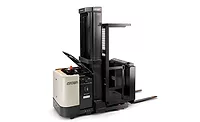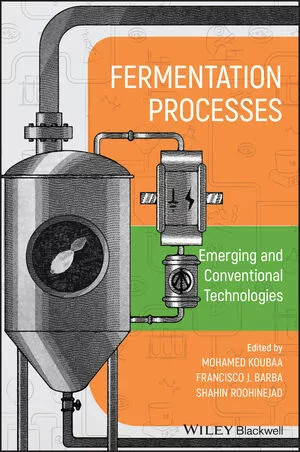Electric lift trucks, integrated technologies provide solutions
Ability to layer technology options key to addressing the individual needs

The movement of food and beverage through the supply chain has never been so closely analyzed. This extra scrutiny has brought into focus a number of stress points within the beverage industry. These challenges are driving innovative electric lift truck offerings and integrated technologies designed to meet the industry’s evolving needs.
Consumers are ordering a wide variety of products and expecting faster delivery at a lower cost. Due to this increased demand, warehouse inventory is expanding at an overwhelming rate, resulting in space constraints, picking errors and stocking inefficiencies.
Coupled with this are challenges attracting, training and retaining a skilled workforce, specifically within low-level order picking, a functional area that has a high-turnover rate.
Low-level order picking adds another layer of complexity. This is an extremely labor-intensive and costly activity. In fact, up to 55 percent of warehouse operating costs and 70 percent of operating time are attributed to the pick process. In addition to this, the cost of mispicks have large ramifications that could affect your bottom line and have the potential to impact your customer’s satisfaction and future business if the wrong product is provided or not enough product is delivered on time.
To address these challenges, it is important to recognize the opportunity for increased accuracy and efficiency by visualizing current state performance versus the desired future state results. Operator assist and telematics solutions — such as batch pick LED light systems and telematics platforms — help operations identify opportunities for improvements, supporting the visualization of possible solutions and, in turn, increasing operational efficiencies.
A pick-to-light system, like Raymond’s Pick2Pallet LED light system, is designed within the truck forks. Raymond created this system to help reduce picking errors by using LED technology to visually reinforce product placement for order fulfillment in batch picking applications. This technology maximizes operator productivity by directing operators to the desired customer pallet — enabling them to quickly move to the next pick with confidence.
Many of today’s pick to light systems work in conjunction with voice-directed picking systems. A voice-directed picking system allows the selectors to work hands-free. The warehouse management system (WMS) sends the voice pick receiver the pick list(s). The order selector is directed on where to go by the voice pick receiver, what part to pick and how many pieces to pick for each customer order. The selector will verbally confirm his/her pick location, pick quantity and customer. When the selector confirms his/her pick location, LED lights that are associated with that customer pallet(s) will turn on. Once the selector confirms the pick quantity and customer with a verbal command such as “2, Alpha,” the LED lights that are associated with that customer pallet(s) will turn off.
Having the ability to layer technology options is key to addressing the individual needs of our customer.
Another technology option is a telematics solution suite. Telematics solutions, like Raymond’s iWAREHOUSE telematics suite, provide increased visibility and accountability into key performance indicators — allowing customers to manage smarter warehouse operations with greater insights into equipment and operator data. These solutions allow managers to secure vehicle access, manage and monitor impacts, review electronic pre-shift forklift checklists, and report and analyze vehicle and operator utilization for improved productivity.
Telematics systems let you enhance efficiency and productivity by collecting data to visualize and monitor the movements of lift trucks, personnel and assets in your warehouse. Through accurate location tracking, geofencing, zoning, proximity awareness and asset tracking capabilities, telematics with Raymond Tracking Location System (RTLS) can optimize processes, reduce operational costs and deliver a fast ROI. Operations can then visualize and identify areas of congestion and take action to adjust travel paths, facility layout and slotting for optimum throughput. Additionally, workplace rules and training are reinforced as operators and pedestrians are alerted when they enter or leave a restricted zone, like a freezer. Ultimately, these practices lead to customer satisfaction and reduced operating costs with faster, more accurate order fulfillment.
By utilizing actionable data and the ability to improve visibility into the operations through the use of a telematics system, beverage operations can effectively track, manage and report on powered industrial vehicle and operator performance to make strategic decisions, from right-sizing and right-typing your fleet to optimizing your labor force and facility layout.
When navigating today’s high-paced supply chain, tools like a pick-to-light system and telematics are vital to visualizing improvements and ensuring quick and accurate order fulfillment. When armed with the right partner and solutions, beverage industry operations can complete orders quickly and accurately, saving time and money while ensuring customer satisfaction.
Looking for a reprint of this article?
From high-res PDFs to custom plaques, order your copy today!






